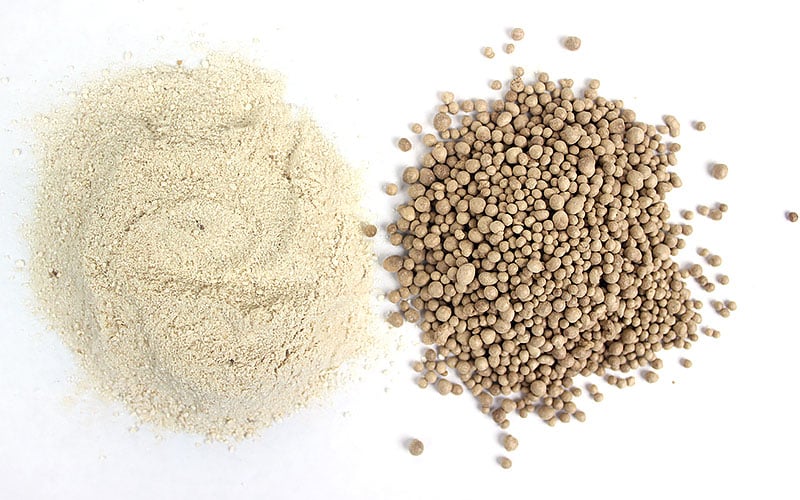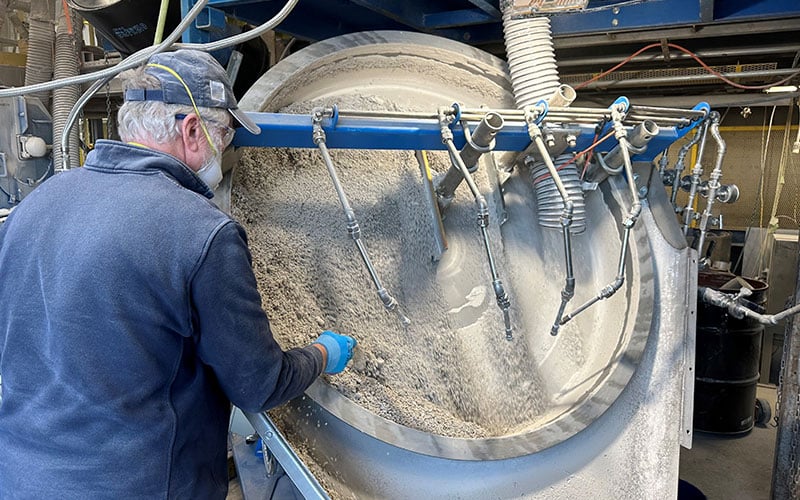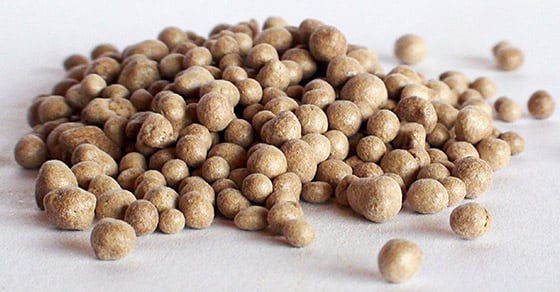Choosing a binder is one of the most important aspects of the agitation agglomeration (wet granulation) process. With implications on both the process and end use, selecting the appropriate binder requires careful consideration and often testing to evaluate different options.
As the leading expert in agitation agglomeration, FEECO utilizes our vast material knowledge base and decades of experience, in combination with our state-of-the-art testing facility, the Innovation Center, to assist customers in selecting the best binder for their application. The following information covers why binders are so critical and how producers can select the most appropriate binder for their project.
Why Use A Binder?
There are three main reasons for using a binder in the agitation agglomeration process:
To assist in the agglomeration process
Agitation agglomeration relies on a binder for coalescence and accretion. Though some materials may agglomerate without a binder, most materials require some sort of binder to pull and hold particles together while forming the pellets, as well as to continue accumulating layers for pellet growth.
While ideally water will do the job, often times water does not have the tackiness needed to give the pellet enough wet strength to hold up to the rolling, tumbling, and dropping a pellet is exposed to in the production line.
To achieve the desired green strength
Green strength, also sometimes known as wet strength, refers to the strength of a granular material prior to drying; pellets need to be able to hold up as they move throughout the remainder of the process, going through transfer and drop points.
A material with insufficient green strength has the potential to break up as it drops off of conveyors or goes through chutes. Achieving a suitable green strength therefore helps the product to stay intact through the end of the process.
To achieve the desired final dry pellet crush strength
Achieving the required dry crush strength is necessary to ensure the pellet is durable enough to survive all handling points prior to and during end product use. From packaging, to shipping, distribution, and application, product breakage and dust needs to be kept to a minimum. A dry pellet crush strength that is too low will break up too easily, while a dry pellet crush strength that is too high may not break up easily enough. Adjusting binder concentration, as well as binder type, can help to hit the target dry crush strength.

A gypsum sample before and after agitation agglomeration in the FEECO Innovation Center
Selecting A Binder
Binders are available by the hundreds, from waxes, to starches, latexes, and even plastics. Choosing a binder can seem overwhelming with all of the choices available, but often times, industry and end use will help to decide which binder will work best. Economics also play an important role in binder selection. Testing in a facility such as the FEECO Innovation Center is also often essential in evaluating binder options for a given agglomeration process.
How Industry Impacts Binder Selection
The product’s end use has a significant influence on binder selection.
One example of how industry and end use can quickly narrow down binder choices can be found in the fertilizer industry. Though coal tar might function as a perfect binder for other industrial applications, coal tar contains toxins that could be passed to the soil and plants if used in a fertilizer product, and therefore would be unacceptable. Similarly, cement may work well during the agglomerate formation process and achieve desired strength characteristics, but would not break down as needed and would leave cement in soil. Molasses, starches, and other organic binders, however, not only function well as binders in granular fertilizer production, but also break down quickly and can even add micro-nutrients to the soil.
Likewise, some industries, such as the steel industry, may require that the binder be able to withstand high amounts of heat in order to hold up in rotary kilns or other thermal processing equipment.
Binder Economics
Binder selection also relies on finding a cost-effective option. Binders vary significantly in cost, with water typically being the least costly. Additionally, not all binders are available in all areas. One may find that a binder works perfectly for a specific application, but the cost of getting it to the plant would be impractical. As such, binder selection often focuses on finding the right balance between process effectiveness, application, and economics.
Testing Different Binders
Testing in a facility like the FEECO Innovation Center can provide critical insight during the binder selection process.
Experts in the Innovation Center can not only trial various types of binders, but they can also work to identify the most effective parameters around binder usage, such as binder feed rate and concentration (among other factors in the agglomeration process).

A FEECO Process Expert testing on a disc pelletizer in the Innovation Center
Conclusion
Binder selection must balance appropriate end use with effectiveness and process economics. Testing is often a critical part of the selection process.
As the leading provider of custom agglomeration equipment and systems, FEECO International has over 70 years of experience in developing agglomeration processes for companies around the world. To learn how we can help you in your binder selection process, contact us today!



